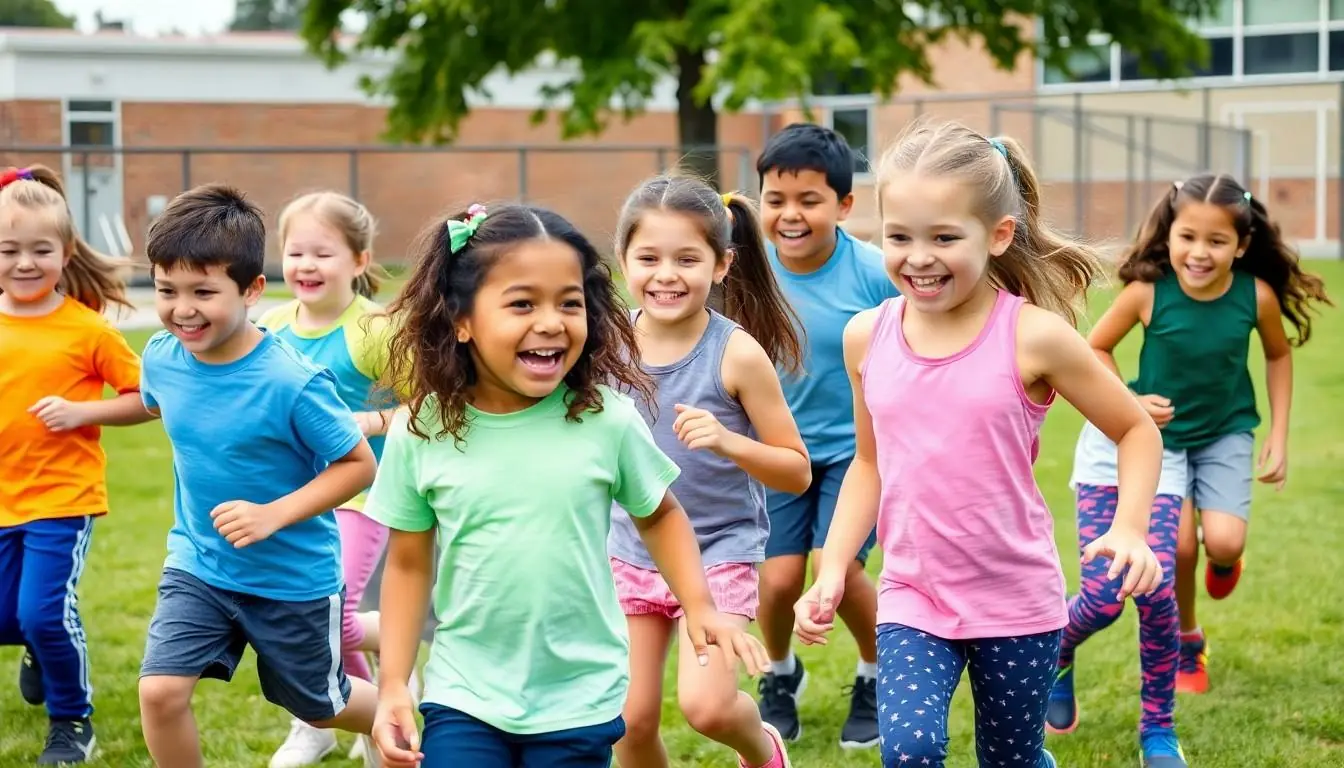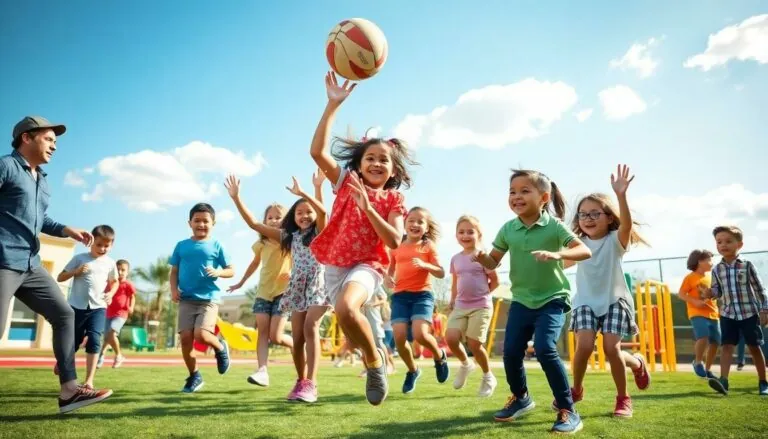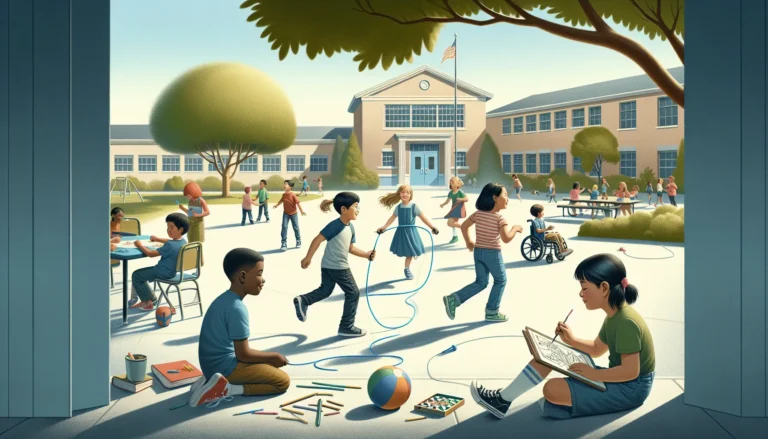In a world where kids are glued to screens, dynamic physical education is the superhero we didn’t know we needed. Imagine children not just sitting in front of a screen but bouncing, running, and laughing their way through lessons that make fitness fun. It’s not just about breaking a sweat; it’s about igniting a passion for movement that lasts a lifetime.
Dynamic physical education transforms traditional gym classes into exciting adventures, where every game is a new quest and every activity is a chance to shine. With resources available online, teachers can easily access innovative ideas that keep kids engaged and active. So, let’s ditch the monotonous drills and embrace a curriculum that makes children want to leap out of their seats—literally! Get ready to discover how dynamic PE can turn your classroom into a lively hub of energy and enthusiasm.
Table of Contents
ToggleOverview of Dynamic Physical Education
Dynamic physical education focuses on creating engaging environments for elementary school children. This approach transforms traditional gym experiences into interactive activities that inspire movement. Teachers utilize online resources to supplement curriculum, making physical education exciting and relevant.
Engagement is key; children actively participate in a variety of games and challenges. Dynamic activities cater to different skill levels, ensuring every child feels included. Children develop essential motor skills through these unique experiences, fostering confidence and competence in physical activities.
Incorporating technology enhances lessons, with videos and online platforms providing innovative ideas. Accessible resources enable educators to discover new games and methods, making each class fresh and enjoyable. Curriculum adjustments promote a culture of wellness and fitness, encouraging students to adopt healthy lifestyles.
Diverse activities in a dynamic physical education program stimulate interest in movement. Lessons often include team-building exercises, enhancing social skills among peers. By prioritizing fun, lessons effectively combat the sedentary lifestyle stemming from excessive screen time.
Dynamic physical education also instills a positive mindset towards fitness. When children enjoy movement, they’re more likely to remain active outside school. Schools that prioritize this curricula create a vibrant environment that nurtures a love for physical activity for years to come.
Importance of Physical Education in Elementary Schools
Dynamic physical education plays a vital role in promoting healthy lifestyles among elementary school children. By engaging students in active play, schools foster an appreciation for fitness that can last a lifetime.
Benefits for Children’s Health
Physical education contributes directly to children’s physical health and well-being. Regular engagement in dynamic activities helps combat childhood obesity, as studies show that 1 in 5 children face this issue in the U.S. Improved cardiovascular fitness results when children participate in games and challenges. Flexibility and strength also develop through varied movement experiences. Moreover, physical activity significantly boosts mental health, reducing anxiety and depression rates. Each class offers diverse activities that enhance both body and mind, effectively promoting a more holistic approach to health.
Impact on Academic Performance
Incorporating physical education into the school curriculum positively influences academic performance. Research indicates that active children tend to achieve higher grades and improved concentration. Engaging in physical activities stimulates cognitive function, allowing students to retain information better. An energized classroom environment fosters collaboration and social interaction, enhancing learning experiences. Therefore, schools that prioritize physical education create a balance, integrating movement and learning to increase overall student success.
Digital Resources for Dynamic Physical Education
Educators can leverage various online tools to enhance dynamic physical education for elementary school children. These digital resources provide innovative ways to engage students and promote movement.
Websites and Online Platforms
Numerous websites offer strategies and activities tailored for dynamic physical education. Sites like PE Central provide lesson plans, videos, and resources that support active learning. Another excellent option, Shape America, emphasizes quality physical education by offering guidelines and standards for effective programming. GoNoodle engages students with fun movement videos that cater to different energy levels and interests. Additionally, YouTube hosts countless channels dedicated to physical education, featuring workouts, games, and instructional content that keep children engaged.
Recommended Online Programs
Several online programs deliver structured activities to enhance physical education. KooKooKangaRoo integrates dance and movement with catchy songs, making exercise entertaining. Just Dance offers interactive dance challenges suitable for various skill levels, fostering a love for physical activity. The Fitness Blender platform provides free workout videos that can be modified for classroom use, promoting fitness in a fun way. Lastly, Sworkit encourages students to follow customizable workout routines, focusing on strength, balance, and flexibility. Each program targets essential skills while ensuring kids remain active.
Engaging Curriculum Ideas
Dynamic physical education incorporates various creative strategies to engage elementary school children. By blending fun with movement, educators can foster an active learning environment.
Games and Activities
Educational games serve as core components of dynamic physical education. Incorporating relay races, obstacle courses, and interactive tag variations keeps students energized. Fun challenges like scavenger hunts encourage teamwork and critical thinking while remaining physically active. Using platforms with movement videos introduces new, enjoyable activities to keep classes exciting. Teachers can integrate dance workouts or fitness videos for a fresh take on physical education. These games resonate with children, ensuring participation and enjoyment in every session.
Adaptations for Different Skill Levels
Adapting activities for varying skill levels encourages inclusivity in physical education. Offering simplified versions of games allows every child to participate without feeling overwhelmed. Pairing students with different skill sets fosters teamwork and enhances social skills. Additionally, employing modifications like fewer obstacles or shorter distances ensures everyone can succeed. Encouraging peer support creates a positive learning atmosphere where children motivate each other. This approach helps build confidence and competence across diverse participants, leading to enhanced physical abilities and a genuine appreciation for movement.
Conclusion
Dynamic physical education represents a vital shift in how elementary schools approach fitness and movement. By integrating engaging online resources and innovative activities, educators can create a lively atmosphere that fosters a love for physical activity among children.
This approach not only combats sedentary habits but also enhances overall well-being, academic performance, and social skills. As schools embrace this dynamic curriculum, they lay the foundation for healthier lifestyles and a more active future for their students. Prioritizing fun and inclusivity in physical education paves the way for lifelong fitness habits that extend beyond the classroom.





